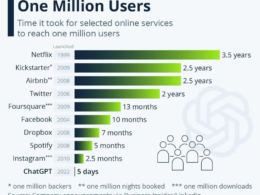the health strategist
institute for strategic health transformation
& digital technology
Joaquim Cardoso MSc.
Chief Research and Strategy Officer (CRSO),
Chief Editor and Senior Advisor
October 3, 2023
One page summary
What is the message?
The rapid advancement of generative AI, powered by large language models (LLMs), presents both opportunities and challenges in the realm of cybersecurity.
While it offers potential benefits in automating tasks and enhancing security, there is growing concern about hackers exploiting this technology to create malware, engage in data poisoning, and conduct large-scale cyberattacks.

Key Takeaways:
1. Hacker Interest in Generative AI:
Generative AI, exemplified by OpenAI’s ChatGPT, has attracted the attention of hackers. The number of discussions on the dark web about exploiting this technology surged by 625% following the release of ChatGPT.
2. Concerns Over Prompt Injections:
One major concern is prompt injections, where hackers try to bypass filters designed to prevent harmful prompts. This can lead to the generation of hate speech, propaganda, sharing confidential information, and even the creation of malicious code.
3. Emergence of “AI Hackers”:
Generative AI is making it easier for individuals with limited hacking skills to create malware. This has given rise to a new breed of “AI hackers” who can leverage off-the-shelf tools to generate sophisticated malware.
4. Polymorphic Malware:
Hackers can use generative AI to create polymorphic malware that continuously mutates, making it harder to detect by security systems.
5. Challenges in Mitigating Threats:
The cybersecurity community faces challenges in mitigating these threats. Research into prompt injection is ongoing, but there are no guaranteed solutions at this stage.
6. Data Poisoning and Automation:
Generative AI’s ability to automate tasks at scale poses risks, including the potential for data poisoning and the creation of highly personalized social engineering scams, such as phishing emails.
7. Current Threats are Theoretical:
Although hackers are experimenting with generative AI, there have been no significant cyberattacks using this technology yet.
8. AI in Cyber Defense:
Some experts propose using AI in cybersecurity defense by detecting malware through behavior analysis. The long-term vision includes fully automated cyber defense systems that can instantly block new malware.
9. Learning Curve:
The cybersecurity landscape is evolving rapidly, and security teams face a learning curve in understanding and countering AI-driven threats.
In conclusion
The rise of generative AI in the hands of both defenders and attackers is transforming the cybersecurity landscape.
While it presents challenges, it also offers opportunities to enhance security measures and stay ahead of evolving threats.
DEEP DIVE

This summary was written based on the article “AI: a new tool for cyber attackers – or defenders?”, published by the Financial Times and written by Hannah Murphy, on September 21, 2023.
To read the full article, access https://www.ft.com/content/09d163be-0a6e-48f8-8185-6e1ba1273f42












